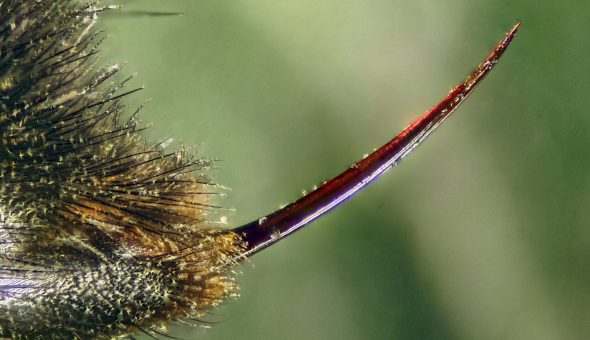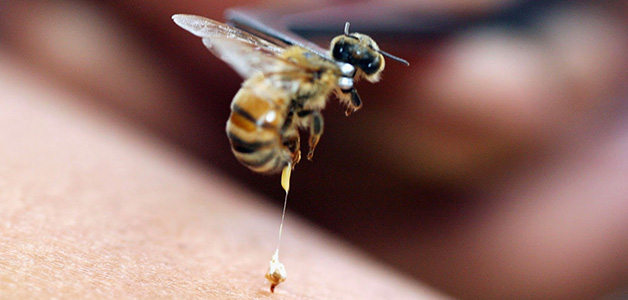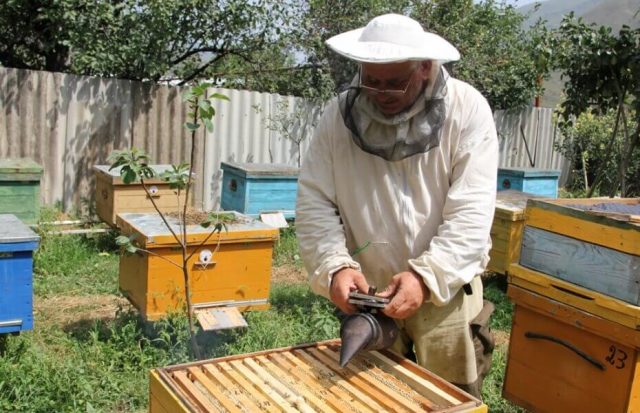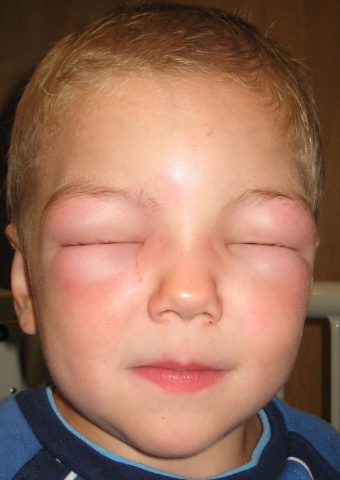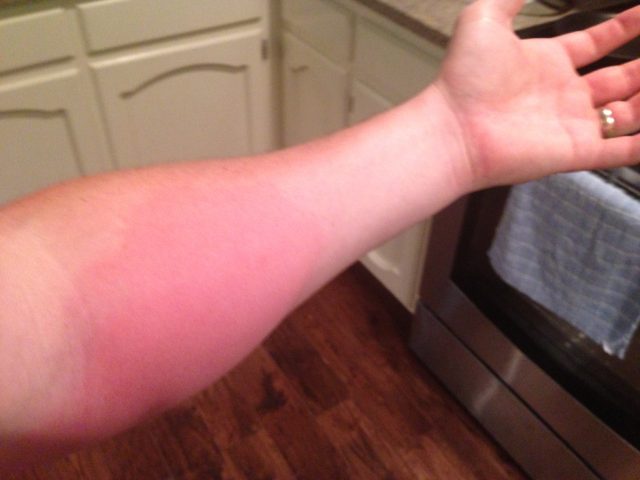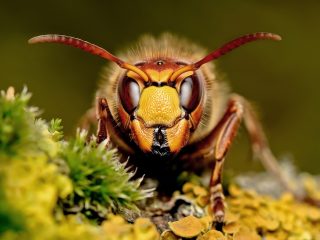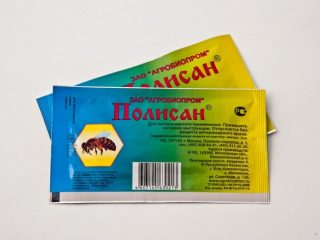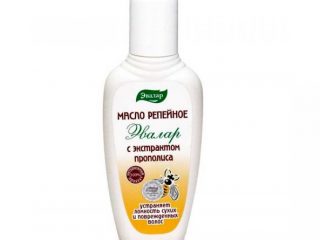Content
- 1 Is a bee sting dangerous for humans?
- 2 How does an allergy to a bee sting manifest and what to do in such cases
- 3 What is first aid for a bee sting victim?
- 4 Why is a bee sting dangerous during pregnancy?
- 5 What to do if your leg is swollen after a bee sting
- 6 Bee bit you on the head: possible consequences and what to do
- 7 What to do if a bee stings your hand and it is swollen and itchy
- 8 Are bee stings beneficial?
- 9 Conclusion
A bee sting is a very unpleasant incident that can happen to a person relaxing in nature. The active substances of bee venom can seriously disrupt the functioning of various body systems, causing toxic poisoning and allergic reactions. However, most people do not even suspect that they have an allergic reaction to bee venom, which puts their lives at risk even more.It is important to know what actions to take in the event of a bee attack and how to behave depending on where the bite was made.
Is a bee sting dangerous for humans?
Of all the Hymenoptera (bees, ants, wasps, etc.), it is bees that pose the greatest danger to humans, since the venom contained in their sting includes the widest variety of different toxins and allergens that are dangerous to humans.
Bee venom itself, or apitoxin, is a clear or slightly yellowish liquid with a specific odor.
Bee venom contains the following substances:
- Methyline – the main toxin of the poison, its main active ingredient (content up to 50%). It has the ability to destroy red blood cells, increases vascular permeability, leads to the active release of substances that provoke inflammation, negatively affects metabolic processes within the cells and tissues of the body, leads to muscle contractions, etc.
- Apamin - a substance that acts on the nervous system. When it enters the human body, it leads to increased motor activity, stimulates the activity of spinal cord cells, and can lead to disturbances in the transmission of information through the cells of the nervous system.
- Histamine protein – a substance that leads to the release of histamine from mast cells (these are special blood cells). Most often, this is what leads to allergic manifestations.
- Histamine – causes and intensifies existing pain. Dilates the walls of blood vessels, which leads to swelling and redness.
- Hyaluronidase – thins the blood and other fluids in the body, which facilitates faster penetration of poison from the bite site into neighboring tissues and organs.
- MSD peptide – is a highly active peptide consisting of two dozen amino acids. Together with histamine protein it leads to allergies.
The composition of bee venom can change as the insect ages. Typically, the venom contains the most methylin by the 10th day of a bee’s life, and histamine – after the 35th day of its life. That is, we can say that allergies are most often caused by old bees.
When a bee stings, two body reactions are observed:
- toxic;
- allergic.
Depending on how each reaction proceeds, it is determined how assistance should be provided to the victim. Each of the reactions, depending on the amount of poison, is classified on its own scale. For example, a toxic reaction can be expressed as follows:
- Encephalitis.
- Malignant myosthenia.
- Mononeuritis.
Allergic reactions have a special effect on the body, and are also divided into three groups: mild, moderate or severe reactions. The latter case is actually anaphylactic shock, and without medical help can be fatal.
Despite the fact that only 0.2 to 0.5% of people (every 200 or every 500) are allergic to bee venom, they are the ones who fill the death statistics, because they either do not know about their illness, or help is provided to them untimely.
How a bee stings
The bee's sting is located at the end of the abdomen. In the normal state, the sting is hidden inside and is not visible. When the insect begins to sense danger, it inserts a small sting from its abdomen.
During an attack, the bee tucks its abdomen under itself and the sting is put forward. That is why bees do not need to first sit on the “victim” and only then sting it - the attack can be carried out literally “on the fly.”
The bee's stinger has small serrations directed toward the abdomen. Outwardly, they resemble the tip of a harpoon. If a bee stings someone from the insect world, then after the attack the sting is easily pulled out of the victim and the bee saves both it and its life. According to the observations of zoologists, in this way a bee can carry out 6-7 stings without harming its health.
However, when biting a person or any living creature with soft skin, things happen a little differently. The barbs prevent the insect from removing the sting from the wound, and the bee has to free itself from it, literally tearing out part of its insides. After this, the insect dies.
But that is not all. After the bee has flown away, leaving the sting in the wound, the sting itself begins to convulsively contract, driving itself deeper and deeper into the skin and introducing an increasing amount of poison into the body of the victim. That is why you should get rid of the sting protruding from the bite site as soon as possible.
How to remove a bee sting
After a bee sting, you should carefully remove the sting from the skin to remove sources of toxins and allergens from the body. It is best to do this with tweezers.
At the same time, you should not squeeze out the sting, as this will lead to an even faster spread of the poison throughout the body.
Can you die from a bee sting?
You can die from a single bee sting only in case of severe allergies (in fact, from anaphylactic shock) in the absence of medical attention. In other cases, death from a single bee sting is unlikely.
A bee is not able to infect any “vulnerable spot” on the human body (like, for example, a large hornet); the poison contained in one individual is clearly not enough for the toxic reaction to have lethal consequences for the human body.
How many bee stings are fatal to humans?
The lethal dose of bee venom from the common domestic bee for an adult is about 200 mg. This is equivalent to 200 to 500 bee stings at one time.
Therefore, you should avoid places with a high concentration of bees, in particular, those where they swarm or collect mass honey. Well, of course, you shouldn’t go to the apiary idle.
In Central or South America, contact with bees should generally be limited as much as possible: the Africanized bee living there is approximately twice as large as a normal domestic bee and is very aggressive. Despite the fact that its venom is the same as that of an ordinary bee, due to its high aggressiveness, the number of bites can reach lethal values.
Why don't bees bite the beekeeper?
In the statistics of people who have been stung by bees, beekeepers themselves are practically absent. On the one hand, this is understandable, because if a beekeeper works in an apiary, he is dressed in a protective suit and armed with a smoker, so it is quite problematic for a bee to bite him.
However, beekeepers do not spend all their time in their equipment.However, there is no secret in this: bees almost never bite beekeepers, since the latter simply know their habits and know how to behave with them.
For example, advice from beekeepers on how to avoid bee stings contains the following recommendations:
- you should not wave your arms, shake your hair or make sudden movements;
- if a bee shows excessive interest in a person, you need to immediately leave or run away, since it will not just leave you alone;
- You should not use substances that irritate bees: tobacco, alcohol, perfumes.
How does an allergy to a bee sting manifest and what to do in such cases
An allergic reaction to a bee sting is a very insidious problem. Despite its infrequent prevalence, this disease has one unpleasant manifestation that is unknown to most allergy sufferers.
The fact is that even if you are allergic to a bee sting, it does not manifest itself in any way after the first sting. In approximately 1 case out of 100 (meaning out of 100 allergy sufferers), symptoms do not appear even on the second bite. But in subsequent “pleasure” is guaranteed.
This is why most people who are allergic to bees are simply not ready for it, because their thinking works as follows: “I’ve already been bitten, I didn’t have anything, it’s not in danger for me.” It is this error that causes deaths from bee stings.
Like any other disease, an allergic reaction to bee stings has its own classification in the list of diseases ICD-10: W57 - Bite or sting by non-poisonous insects and other non-poisonous arthropods.
The symptoms of a bee sting allergy depend on the severity of the allergic reaction.
For first degree: itching, urticaria, swelling (local or widespread), chills or fever, fever, mild malaise, feeling of fear.
In addition, such symptoms may occur against the background of general reactions: shortness of breath, pain in the stomach or intestines, nausea, vomiting and dizziness.
For the second degree In addition to the symptoms of a mild allergy, the following are added: suffocation, wheezing, lack of coherent thoughts, a feeling of doom. The general reactions described earlier take on more severe forms of manifestation.
Help in dealing with an allergic reaction of mild to moderate severity can be provided independently, but it is better to call an ambulance, since it is unknown how the course of the allergy will progress further.
Before the ambulance arrives, you should treat the bite site with a topical antihistamine (Fenistil, Lokoid, Diphenhydramine, etc.). It is recommended to apply cold ice to the bite site.
It is also recommended that the victim be given his “standby” allergy medicine in the form of tablets or syrup (Suprastin, Claritin, etc.)
Before the ambulance arrives, the victim should be laid horizontally and his condition monitored. You should also regularly measure your breathing and pulse rates, as well as your blood pressure. All this information should be reported to the emergency physician.
Third degree of severity or anaphylactic shock, in addition to the indicated symptoms, includes a drop in blood pressure, collapse, defecation, and loss of consciousness.
One of the manifestations of shock from a bee sting may be angioedema or Quincke's edema. This enlarges part of the face, the entire face or a limb.Usually the disease manifests itself in places where subcutaneous tissue eats - in the area of the lips, eyelids, oral mucosa, etc. The color of the skin does not change and there is no itching. Typically, Quincke's edema disappears after a few hours or within 2-3 days.
Swelling can spread to the mucous membrane of the larynx and cause difficulty breathing, or even its complete stop due to obstruction of the respiratory tract. The consequence of this is hypercapnic coma and death. In the case of “milder” symptoms, nausea, vomiting, abdominal pain and increased peristalsis are observed.
Since, in fact, Quincke's edema is an ordinary urticaria, but located deep under the skin, the measures taken to neutralize it are somewhat similar to the fight against urticaria. The only difference is that they must be accepted immediately.
First aid for Quincke's edema:
- Call an ambulance.
- Stop contact between the patient and the allergen (bee venom).
- It is necessary to apply a pressure bandage above the site of the bee sting. If this is not possible (for example, the bite was on the neck), ice or a compress should be applied to the wound.
- Unbutton the patient's clothes.
- Provide fresh air flow.
- Give the patient several tablets of activated carbon.
What is first aid for a bee sting victim?
First aid for a bee sting consists of the following:
- The victim should sit down or lie down.
- It is necessary to remove the sting with any remaining poison from the wound.
- After removing the sting, it is necessary to disinfect the wound. To do this, you can use alcohol, furatsilin solution, hydrogen peroxide or brilliant green.
- Treat the skin around the bite site with a topical antihistamine.Many sting treatments contain anesthetics to numb the bee sting.
- Give the victim an antihistamine in the form of tablets, and then plenty of warm drink in the form of tea with enough sugar.
If allergy symptoms after a bite have symptoms of the second or third degree of severity, you must call an ambulance.
Why is a bee sting dangerous during pregnancy?
The main danger with a bee sting during pregnancy is that to eliminate its consequences in the form of toxic poisoning or an allergic reaction, there are restrictions on the drugs used.
That is, it is quite possible that a pregnant woman will not be able to quickly stop the development of an allergic reaction, since many conventional antihistamines (and not only them) may be prohibited for her.
If you are stung by a bee during pregnancy, you should immediately contact the doctor who is monitoring you and get recommendations from him on what to do in this situation. There is no universal answer to this question, since the course of pregnancy, as well as therapy for it and other nuances are too individual.
However, in case of obvious manifestation of the following symptoms:
- large area edema;
- shortness of breath;
- dizziness;
- chest and abdominal pain;
- nausea;
- tachycardia;
You should not only inform your doctor, but also call an ambulance, since the presence of at least two of them is a sure sign of impending anaphylactic shock.
In addition, pregnant women with bee stings, regardless of whether they are allergic or not, are prohibited from using the following medications:
- Aspirin;
- Diphenhydramine;
- Advantan.
Behavior in case of bee stings during lactation follows all the tips and measures recommended during pregnancy.
What to do if your leg is swollen after a bee sting
The sequence of actions that must be followed if a bee has bitten your leg and it is swollen is not particularly different from the general recommendations for bee stings. First, as usual, the sting with the remaining poison is removed and the wound is treated with antiseptic.
Depending on the severity of the allergic reaction, you need to decide whether to see a doctor or call an ambulance. To relieve swelling, it is recommended to use some soothing ointments (for example, Hydrocortisone), and also apply a loose gauze bandage over the wound.
If the swelling is noticeable enough, you should apply ice or a cold compress to it. You should also take an antihistamine orally, whatever is currently on hand. To relieve pain symptoms, you can use Paracetamol or Ibuprofen.
Bee bit you on the head: possible consequences and what to do
The consequences of cases where a bee stings the head can be much more serious than bites to other parts of the body. The proximity of a large number of nerve and blood lines, as well as the respiratory tract (especially in the neck and eyes) make the head the most vulnerable place for a bee attack.
If, for example, a bee stings you on the forehead, then it is practically harmless. If a bee stings your nose or ear, the risk of such injuries is slightly higher, but in any case it does not pose a threat to life. Bee bites to the neck, eyes and lips are much more serious, since the places of bites and swelling are located in proximity to vital organs and systems of the body.
What to do if a bee stings your ear
The main problem with a bee sting in the ear is the difficulty in removing the sting. It is better not to do this yourself; you need to contact a qualified specialist. If this is not nearby, you should apply a cotton swab moistened with alcohol or vodka to the bite site, take a Suprastin tablet (or any antihistamine) and go to the medical center.
The remaining actions are similar to those previously described.
What to do if a bee stings your neck
A bee sting on the neck is much more dangerous than a bee sting on the limb. Even before providing first aid, you should call a doctor. This is due to the fact that swelling in the neck can cause blockage of the airways.
Next, you should loosen the victim’s clothes as much as possible, giving him the opportunity to breathe unhindered. In this case, it is better to take it out into the open air. The victim should be given an antihistamine and a cold compress should be applied to the swelling.
The compress may consist of tincture of calendula, aloe or onion. However, usually none of this is at hand, so ordinary ice is used for these purposes.
As with all allergic manifestations, the victim is recommended to drink plenty of sweet and warm drinks.
How to remove swelling from a bee sting on your face
Remedies available to everyone will help relieve swelling from a bee sting on the face. In this case, it is recommended to use gels, for example, Moskitol or Fenistil. If there are no such drugs, any antihistamine ointment will do to prevent additional damage to the skin and relieve irritation.You can relieve swelling from a bee sting under the eyes on the second day using lavender or calendula compresses.
How to relieve swelling if a bee stings your eye
It is better not to treat a bee sting in the eye yourself. In case of this type of injury, you should immediately contact the appropriate hospital. Because toxic exposure alone can be enough to cause you to lose your vision.
You can relieve swelling around the eye when a bee stings your face using any of the previously described methods.
What to do if a bee bites you on the lip
If a bee has bitten you on the tongue or lip, then in case of an allergy to bee stings, you must call a doctor, since swelling of the lip or tongue can block the airways. The sequence of actions is the same as for a bite to the neck. First, the poison is removed, then antiseptic treatment is performed. Next - external and internal antihistamine treatment. Painkillers may be used in the background.
First aid for a bee sting on the tongue
Help is provided in the same way as for bites on the lip.
What to do if a bee stings your hand and it is swollen and itchy
Recommendations for bee stings on the hand almost completely repeat the list of measures that need to be taken when suffering from leg bites. The only differences will be in finger bites.
Itching after a bee sting can be relieved by treating the affected area with alcohol, lemon juice, ammonia solution or regular vodka.
If your hand is swollen after a bee sting, you need to treat the bite site with a topical antihistamine cream (it is better if it contains a painkiller) and take the antihistamine orally.
If swelling is bothersome, apply ice or a cold compress.
What to do if a bee bites your finger
If a bee stings your finger, the first thing you need to do is remove the rings from all your fingers, since the development of swelling will prevent you from doing this in the future. The remaining actions are similar to those for bites on the arms or legs.
Are bee stings beneficial?
Naturally, there are. Bee stings are traditionally used in folk medicine. Treatment with bee venom, apitoxin therapy, is the most important method of apiterpaia (the science of using bee products for medicinal purposes).
Bee stings are used to treat the musculoskeletal system, nervous system, immune system, etc. Often bee venom, together with honey and propolis, is used to treat diseases of the cardiovascular system, skin, etc.
In addition, bee venom is included in many medicines of classical (scientific) medicine - apicophora, virapine, etc.
Conclusion
A bee sting is a rather unpleasant injury, however, you should not make a tragedy out of it. Its toxic effect is minimal, and even the bites of several dozen of these insects will not cause much harm. However, in the case of allergies, the reaction can be much more severe. Therefore, it is necessary not only to always have anti-allergenic drugs on hand, but also to be ready to provide first aid to those who are prone to such diseases.

